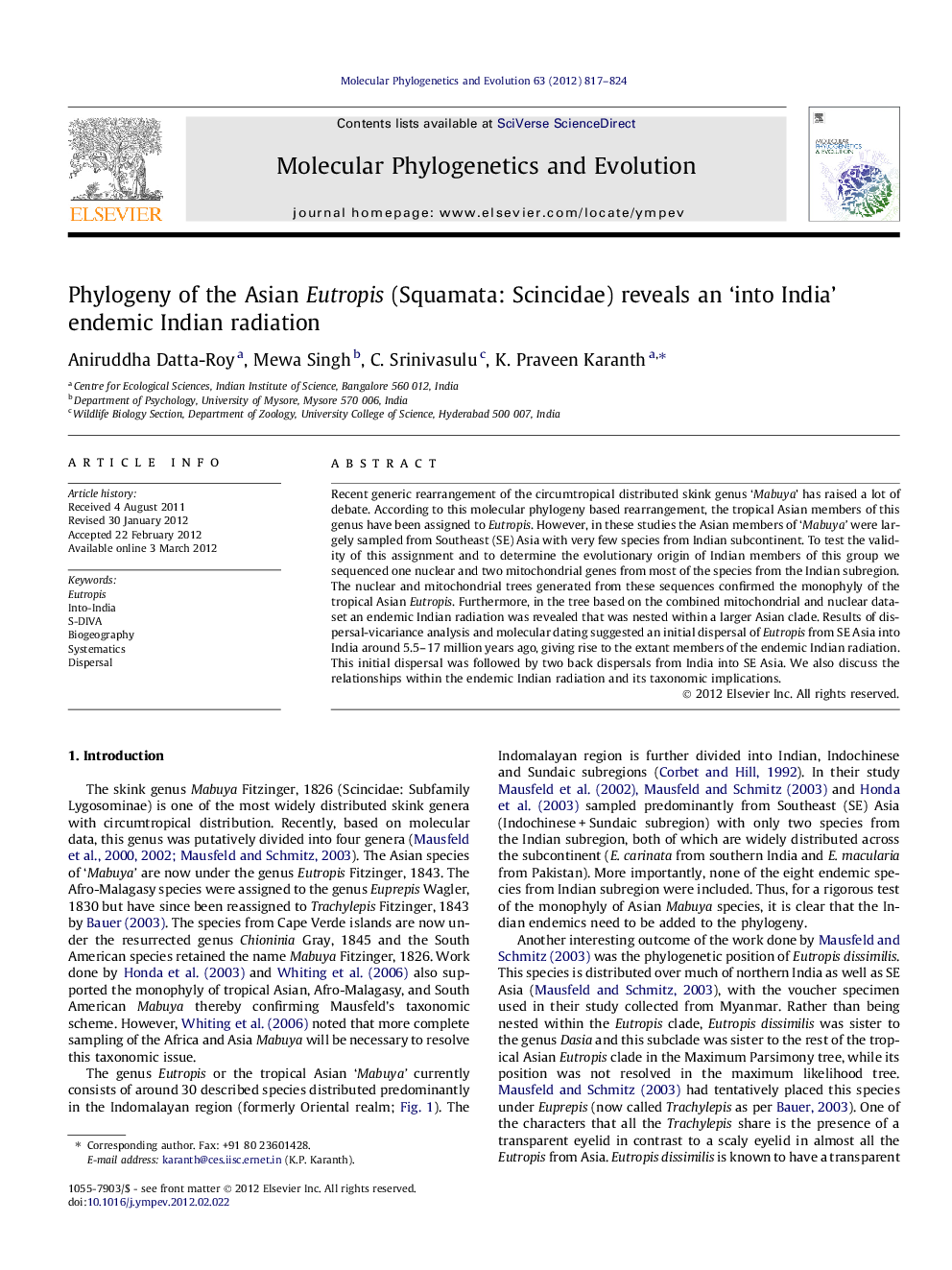| کد مقاله | کد نشریه | سال انتشار | مقاله انگلیسی | نسخه تمام متن |
|---|---|---|---|---|
| 2834145 | 1164292 | 2012 | 8 صفحه PDF | دانلود رایگان |

Recent generic rearrangement of the circumtropical distributed skink genus ‘Mabuya’ has raised a lot of debate. According to this molecular phylogeny based rearrangement, the tropical Asian members of this genus have been assigned to Eutropis. However, in these studies the Asian members of ‘Mabuya’ were largely sampled from Southeast (SE) Asia with very few species from Indian subcontinent. To test the validity of this assignment and to determine the evolutionary origin of Indian members of this group we sequenced one nuclear and two mitochondrial genes from most of the species from the Indian subregion. The nuclear and mitochondrial trees generated from these sequences confirmed the monophyly of the tropical Asian Eutropis. Furthermore, in the tree based on the combined mitochondrial and nuclear dataset an endemic Indian radiation was revealed that was nested within a larger Asian clade. Results of dispersal-vicariance analysis and molecular dating suggested an initial dispersal of Eutropis from SE Asia into India around 5.5–17 million years ago, giving rise to the extant members of the endemic Indian radiation. This initial dispersal was followed by two back dispersals from India into SE Asia. We also discuss the relationships within the endemic Indian radiation and its taxonomic implications.
Figure optionsDownload as PowerPoint slideHighlights
► Molecular phylogeny supports the monophyly of Asian skink genus Eutropis.
► Nested within Eutropis clade was an endemic Indian radiation.
► DIVA analysis suggested Southeast Asian origin of Indian Eutropis.
► There were two back dispersals from India into Southeast Asia.
Journal: Molecular Phylogenetics and Evolution - Volume 63, Issue 3, June 2012, Pages 817–824